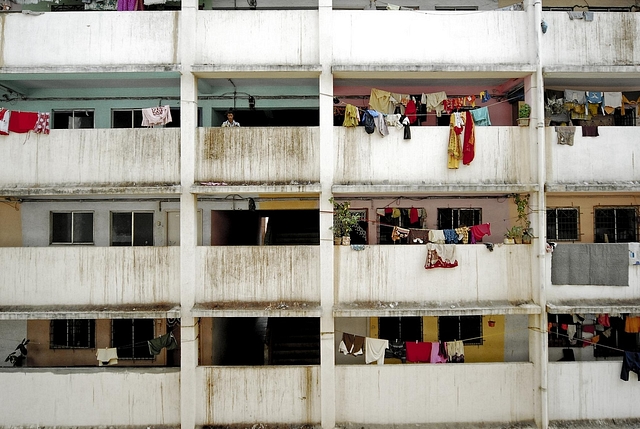
Why India’s Next Economic Boom Will Be Led By Surge In Affordable Housing
The focus for builders has shifted from housing for the upper class to affordable housing.
However Affordable housing won’t take off unless governments expedite approvals, which in turn is slowed down by those in power profiting from delaying them.
The Modi government interest subvention scheme for middle and lower middle class housing is set to become a game-changer in many ways. Both for the real estate market, and for the prospects of jobs and economic growth.
A huge supply response is taking shape in the real estate market, given the expected improvement in demand for lower cost houses. Currently, the market is dominated by builders who focus on delivering houses and flats for the upper income brackets and the rich, who constitute less than 0.1 per cent of the total population. No property costs less than Rs 50 lakh even on the distant outskirts of metropolitan towns and big cities. You get flats in the range of Rs 20-50 lakh only in places far away from your place of work – which means they can only be termed as second homes for the rich.
But the government’s massive interest subvention scheme is changing the dynamics of the market. With expensive flats not selling in many cities, builders are looking for land to construct affordable housing, and a change in the Income-Tax Act in last year’s budget allows 100 per cent tax-free profits for builders who construct affordable homes. As long as projects are started by March 2019 and completed in three years, profits from these homes bear no tax.
Post-notebandi, the Prime Minister announced a scheme of interest subsidies for home loans under which loans upto Rs 9 lakh for those earning between Rs 6-12 lakh per annum will cost 4 per cent less than market rates. For those in the Rs 12-18 lakh income bracket, loans upto Rs 12 lakh can be given at 3 per cent below the market interest rate.
These two measures – tax-free profits for builders of affordable housing, and very low interest rates for those in income brackets upto Rs 18 lakh – will increase supplies of cheaper homes in the housing market. Suddenly, the focus of housing will shift from the upper classes to the middle and lower income classes for homes in the range of Rs 15-50 lakh.
According to Deepak Parekh, Chairman of HDFC, the home finance company, the home loan subsidy can even be taken upfront, which means around Rs 2-3 lakh can be added to your own 10 per cent initial contribution. Parekh says that builders are scouting around for land to start affordable housing projects, and private equity from abroad is likely to come in billions of dollars to invest in such properties. He expects a property building boom of the kind never witnessed before over the next five years.
How do we know this is happening? He told CNBC TV-18 in an interview: “Every developer, even the biggest of the developers who only build luxury homes, has started looking for land for affordable homes. Why? Single point agenda, it is tax-free. Show me one industry which has a tax incentive that whatever profits you make, there is zero tax. And this goes on till 2021 because we want more stock of affordable housing. Now, if you have a 20-30 per cent margin in a project and you pay zero tax, your returns will be phenomenal. Private equity from abroad is wanting to sign up with developers, sovereign wealth funds are wanting to come in to fund affordable housing, to buy land, to support developers. So, it is going to be a boom that we have not witnessed (so far).”
Parekh believes that all this could come together to create the biggest economic boom in under five years.
The expansion of the housing market from under 0.1 per cent to nearly 5-10 per cent of the population means that India’s growth revival will be led by real estate and construction investments.
Real estate has one of the biggest employment multipliers, since not only will construction workers get jobs, but a whole host of related industries – from furniture to household gadgets to interior decoration – will see higher demand. Not only that, rising real estate investment also means higher demand for steel, cement and building materials, all of which will improve overall growth.
There will also be a potential downside to the coming boom. Inventories of properties already built or under construction will not be easy to sell since the new demand will be for affordable housing. Logically, this should mean that builders sitting on large unsold properties should offer discounts and get rid of stocks before people shift focus to the newer properties built on tax-breaks and lower-cost loans. Broadly speaking, homes costing more than Rs 1 crore on city outskirts will become harder to sell without discounts.
There is, however, one roadblock: affordable housing won’t take off unless state governments and municipal authorities start speeding up building permissions and change land use policies to make supplies of cheap land available to builders. Since many politicians and corrupt bureaucrats make money precisely from delaying permissions, if they continue to do this, the whole policy of making housing affordable will be derailed.
But the chances are they too will realise that trying to block lower-cost housing will damage their own future political prospects.
(Note: A part of this story was first carried in Dainik Bhaskar)